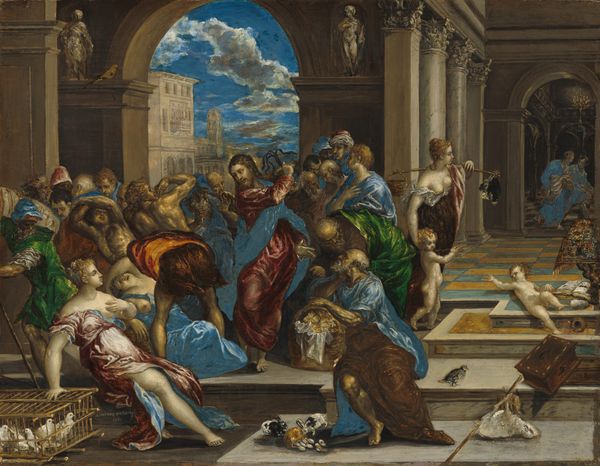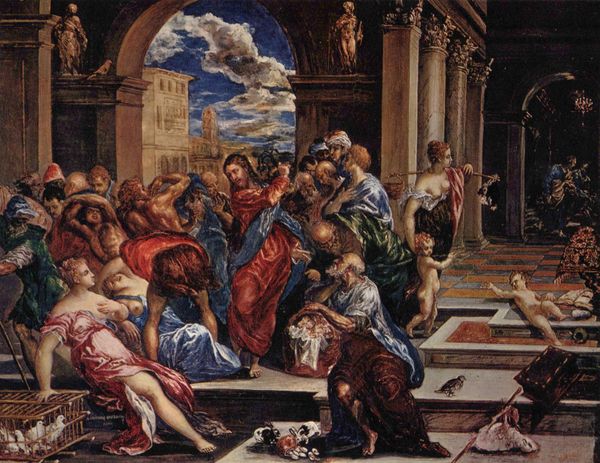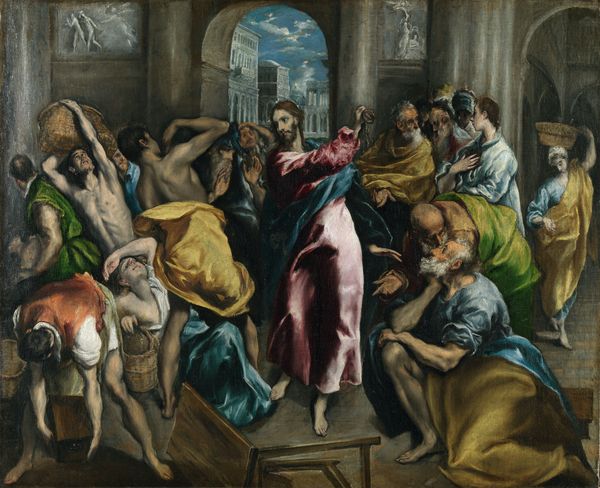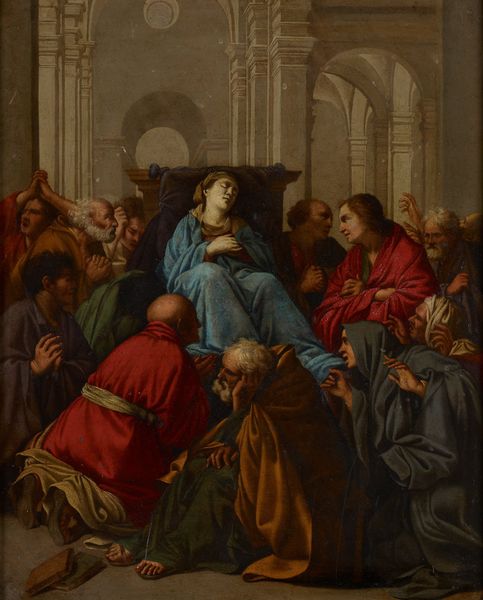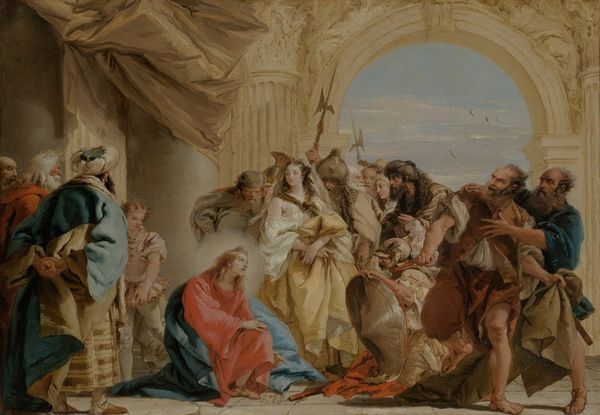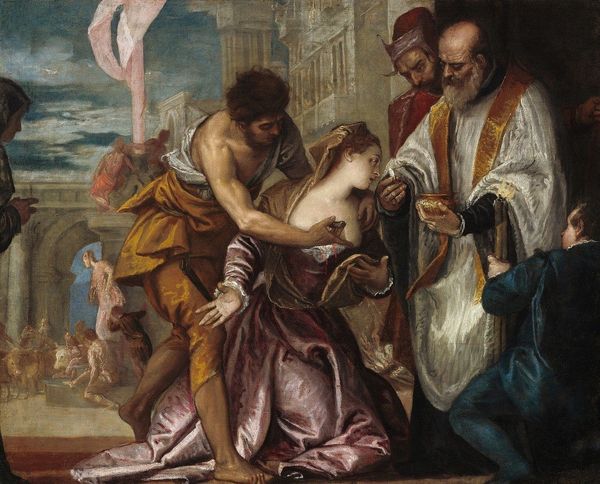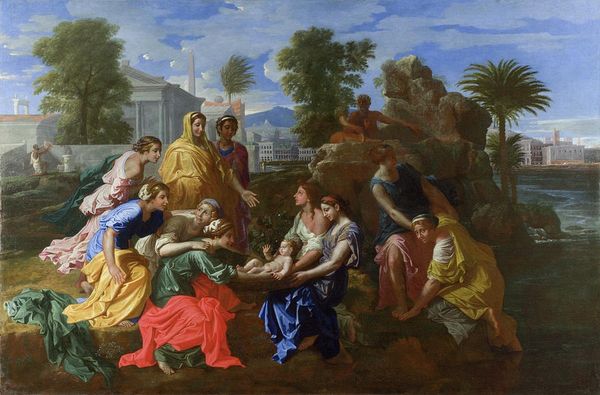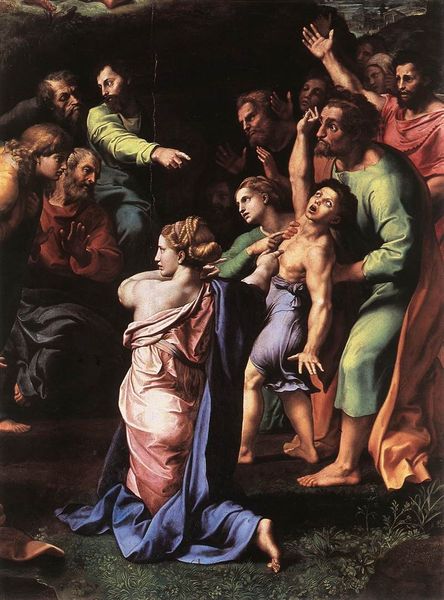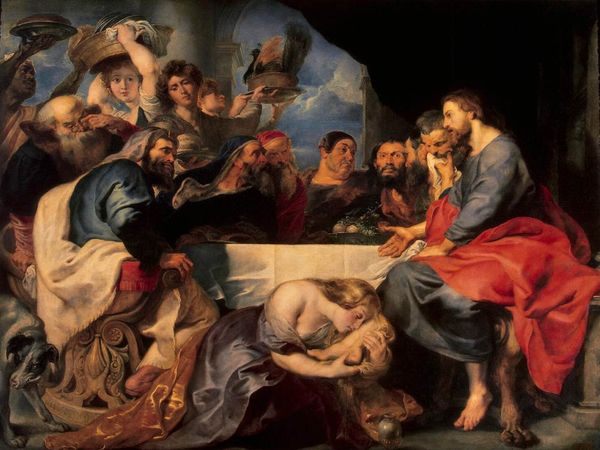
painting, oil-paint
#
narrative-art
#
painting
#
oil-paint
#
mannerism
#
figuration
#
oil painting
#
history-painting
Copyright: Public Domain: Artvee
Can a painting be personal and political at the same time? In this oil on canvas, the painter Doménikos Theotokópoulos (commonly known as 'El Greco', meaning 'The Greek') combines social commentary with images that held an individual significance. 🖼️ Painted around 1570, 'Christ Driving the Money Changers from the Temple' is a dramatic representation of Christ's Purification of the Temple, when he expelled traders from a church. El Greco employs contrapposto (a technique where a figure rests their weight on one leg) and juxtaposing colours to build extreme drama. This sense of chaos and tension is at odds with the calm balance associated with Renaissance painting. 🎨 Unlike the disordered arrangement of the writhing traders, the figure of Christ is poised. He is a commanding presence, with one arm raised in an expression of controlled fury. The dynamism of his pose is emphasised by his draped costume. As well as the expressive anatomy of the figures, El Greco has used linear perspective in the architectural surroundings for this painting. 🏛️ Several other versions of El Greco's 'Christ Driving the Money Changers from the Temple' exist. Two variations are currently in the collections of the National Galleries of London and Washington! So, what's unique about this version? 🤔 Take a look at the lower right of the painting. El Greco has depicted four bust (head and shoulder) portraits. These include the Renaissance icons Michelangelo, Titian, and Raphael – suggesting El Greco's debt to the artistic innovations of these famed artists. But who is the remaining figure? 🧐👤 Alongside the embodiments of Renaissance mastery, El Greco has painted the Italian manuscript illustrator Giulio Clovio (1498-1578). Clovio was a close friend of the artist, who had organised accommodation for El Greco during his stay in Rome. Here, El Greco includes the portrait of his companion as an expression of gratitude. 🎁 This painting does not only function as a gesture of appreciation, however. It also directly engages with its social and religious contexts. The subject of Christ cleansing the church holds an added significance when considering that the work was completed during the Counter-Reformation. This was a period of religious upheaval which aimed to overthrow Protestantism, and re-establish the Catholic Church. By depicting Christ purifying the temple, El Greco draws parallels between the villainous traders and Protestantism. ⛪️ The dual function of this work reveals the complex ways that artists have engaged with their times. Can you think of any other examples of artworks which directly address social issues? 💭👇 Editor: Lucy Jude Grantham
Comments
No comments
Be the first to comment and join the conversation on the ultimate creative platform.
